Browse Houses
Search Results: Returned 5516 records. Displaying results 2301 – 2400
| House name | Description | |
|---|---|---|
| Enniscoe House | The site of an old Bourke castle on the shore of Lough Conn, the house was built before 1786 as Wilson refers to Prospect as the seat of Mr. Jackson at that time. It was held in fee by Mervyn Pratt at the time of Griffith's Valuation, when it was valued at £50. It appears as Inishcoe House on both the 1st and 25-inch ediitons Ordnance Survey maps but is now known as Enniscoe House. The North Mayo Family History centre is based in adjacent buildings and the house offers guest acommodation. |

|
| Enniscoush | Home of a junior branch of the Castle Hewson family, occupied by John Hewson at the time of Griffith's Valuation when the house valued at £18 was held from the Wandesford family. | |
| Enniskean Cottage or Mount Lodge | Noted by Lewis as the residence of Rev. W. Sherrard in 1837 and being leased by him from James Gillman in 1851 when it was valued at £12 10s. Later the residence of Orpen Beamish, MD. It is labelled Enniskean Cottage on the 1st edition Ordnance Survey map but as Mount Lodge on the 25-inch map of the 1890s. It is still extant. It was offered for sale in 2023. |
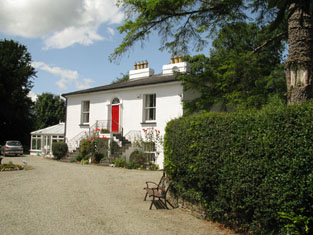
|
| Ennismore House | George Hewson was leasing this property from the Earl of Listowel's estate at the time of Griffith's Valuation, when it was valued at £22. In 1814 Leet refers to it as the residence of F. Hewson while Lewis, in 1837 notes that Ennismore, the seat of J.F. Hewson, gave its name to a title held by the Hare family, Earls of Listowel and Barons Ennismore. In 1906 it was part of the Listowel estate and valued at £26 10. Bary writes that this property was originally in the possession of the Knight of Kerry but was bought by the Hare family, Earls of Listowel in the 1790s. The Hewson family lived here up until the 1920s but the house is now demolished. | |
| Ennistimon House | In 1786 Wilson refers to this house at "Innistymond" as the seat of Edward O'Brien. Lewis writes in 1837 that Ennistymon Castle was originally a seat of the O'Brien family, descendants of the Earls of Thomond, but was then the residence of Andrew Finucane. By the time of Griffith's Valuation it had passed into Macnamara possession. The O'Brien, Finucane and Macnamara families had all intermarried. The house was valued at £28 in the mid 19th century and held by Captain Francis Macnamara in fee. It remained in Macnamara ownership until the mid 20th century and has been a hotel for many years. The hotel was the property of Mr Brendan O'Regan in the 1940s. |
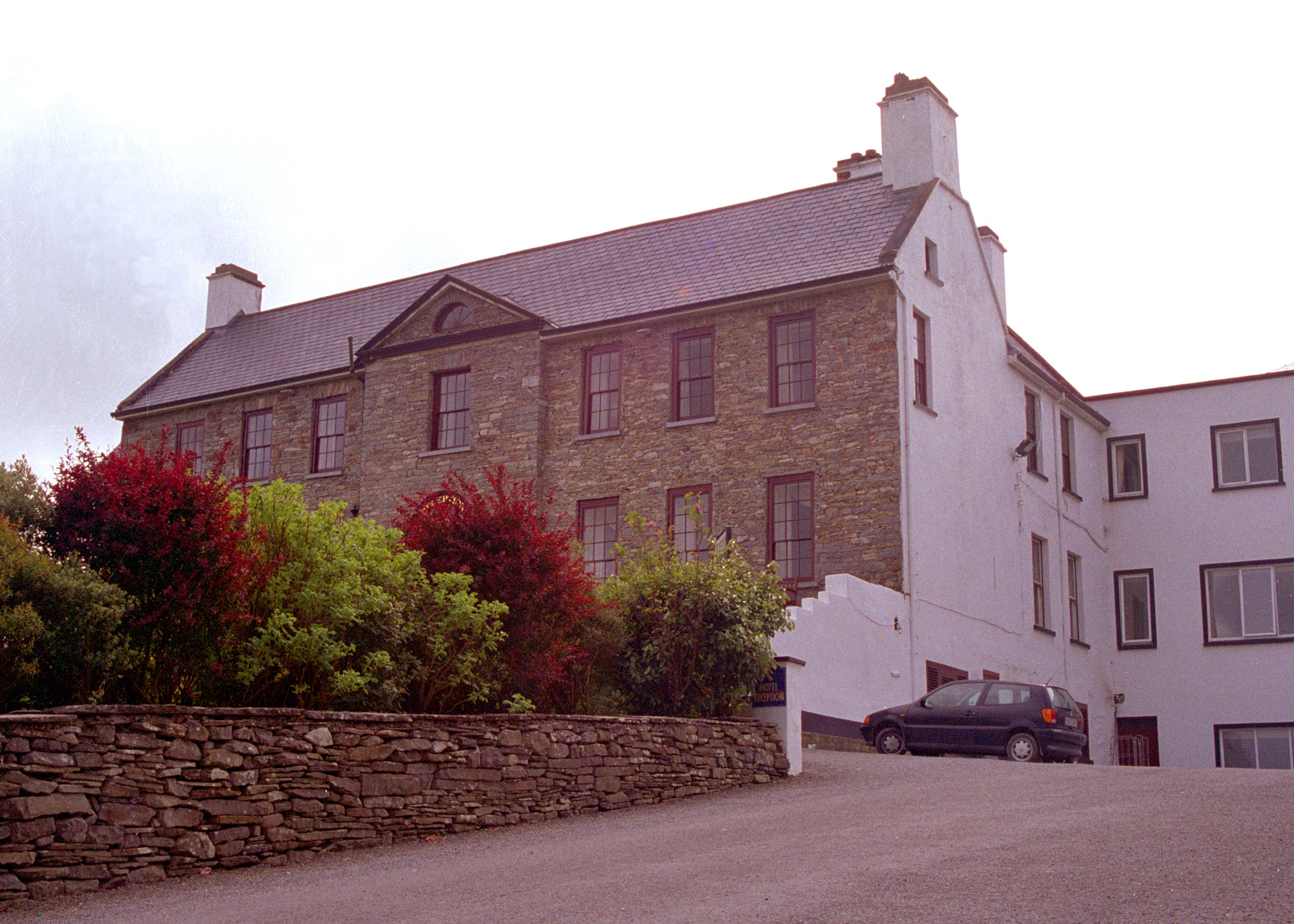
|
| Erne Hill House | Located on the outskirts of Belturbet, Erne Hill House was the home of George M. Knipe with a rateable valuation of £45, at the time of Griffith’s Valuation. By 1878 John E. Vernon was living at Erne Hill. The Knipe mausoleum is nearby and a gate lodge is extant but the house is demolished. |
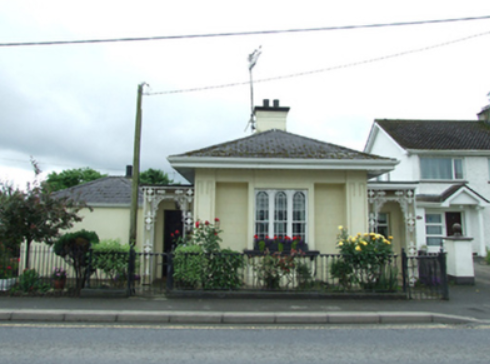
|
| Errew | An unoccupied house and offices valued at £11 were held by James Hardiman at the time of Griffith's Valuation. A school and monastery are shown on the 25-inch Ordnance Survey map of this area in the 1890s. These buildings are still extant. | |
| Errew Grange | A Victorian Gothic house built circa 1870s. It was bought from Granville Knox by the Burkes of Ballina, solicitors. The Burkes leased it to the Order of Jesus and Mary before the Order moved to Gortnaraby in 1916. It became a hotel but burnt down in 1949 and was later restored. |
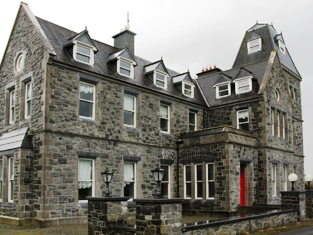
|
| Erribul | A steward's house built in the 1840s by Colonel George Wyndham and valued at over £12 at the time of Griffith's Valuation. It is labelled Erribul House on the 25-inch Ordnance Survey map of the 1890s and is still extant. | |
| Errina House | This house located on the west bank of the River Shannon was occupied by Thomas R. Going in 1814, George Vincent in 1837 and at the time of Griffith's Valuation when he held the house valued at £25 from the Reverend Charles Minchin. The house was later occupied by Admiral Hayes O'Grady, father of Standish Hayes O'Grady. The house became the home of the Bourke family in the 1920s and was demolished in the 1940s. There was another large house known as Errina closeby Grid Ref R657 637. | |
| Errislannan Manor | Originally a shooting lodge, extended by the Wall family and renamed. It remained in the ownership of the Walls and their descendants until 1958 when it was sold to Doctor Donal Brooks and his wife Stephanie who run a Connemara Pony Stud and trekking centre. | |
| Errit Lodge | Errit Lodge, valued at £12, was the residence of Fitzstephen French at the time of Griffith's Valuation. It is recorded as Lough Errit by Lewis in 1837 when the Ordnance Survey Name books describe it as " a well built house, two stories high and slated with detached offices". Slater refers to it as the seat of Hon. Charles French in 1894. In 1814 Errit is recorded as the residence of John Barlow. The Census of Elphin in 1749 also records it as a residence of W. Barlow. A modernised and derelict building now occupies the lakeshore site. |

|
| Esker | Occupied by W. Kelly in 1837. Bought by the Glennon family and occupied by them for most of the 20th century, still extant. |

|
| Esker | In 1786 Wilson refers to Esker as the seat of Mr. Daly, "situated on a lofty hill". By the time of Griffith's Valuation this property was being leased to the Dominican Order by Lord Dunsandle, when it was valued at £20. The Dominicans departed in the 1860s and it became for some time a seminary for the RC diocese of Clonfert. It was taken over by the Redemptorist Order in 1901, in whose possession it still remains. It now serves as a retreat centre. |
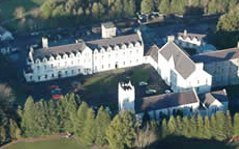
|
| Esker Lodge | James Martin was leasing a property valued at £15 from Andrew Browne's estate at Esker, barony of Tiaquin, at the time of Griffith's Valuation. It is labelled Esker Lodge on both the 1st and 25-inch edition Ordnance Survey maps. A small amount of ruins remain at the site. | |
| Essex Lawn | Built after the First Ordnance Survey on part of the estate of the Earl of Essex, this house was occupied by John Kelly in the 1850s when it was valued at £18 10s. It is still extant. |

|
| Estersnow Glebe | At the time of Griffith's Valuation the Ecclesiastical Commissioners were leasing a house at Cavetown valued at £10 to Rev. Frederick Hamilton. It is described as "a good glebe house, the residence of the incumbrant of Estersnow" at the time of the 1st Ordnance Survey. It is still extant and occupied. | |
| Etna Lodge | There was a building at this site, close to the border with county Fermanagh, marked on the 1st edition Ordnance Survey map (1836). However Etna Lodge was built post 1836. It was valued at £14 in the mid-19th century, occupied by the Reverend Charles Walsh and held from William Phillips. The Medical Register of 1885 lists Alexander Knight as resident. This building is still extant. | |
| Eyon | The Ordnance Survey Name Book records this house as costing £500 to build in 1838 when it became the seat of Mr Richard Laffan. The house valued at £12+ at the time of Griffith's Valuation, was occupied by Richard Laffan, a dairy farmer. Laffan held the property from Edward B. Hartopp. ''Burke's Irish Family Records'' records Edward Lloyd of Eyon in the mid 18th century. | |
| Eyrecourt Castle | Eyrecourt Castle was originally built in the 1660s. In 1786 Wilson refers to it as "the fine seat of Lord Eyre, with ample demesnes". It is mentioned as a gentleman's seat in the Ordnance Survey Name Books in the 1830s. It was held in fee by John Eyre at the time of Griffith's Valuation when it was valued at £48. A fine lithograph of the Castle appears in the Encumbered Estates schedule when the estate was offered for sale in June 1854. The castle itself is now in ruins. The fine oak staircase is now in the Detroit Institute of Arts. Substantial evidence of the demesne still remains. |

|
| Eyreville | A late 18th and early 19th century house built for the Eyre family. Lewis records Eyreville as the seat of T.S. Eyre in 1837. In 1856 Thomas Stratford Eyre was occupying a property valued at £36 in Newtowneyre, parish of Kiltormer, barony of Longford. in 1906 it was in the possession of the representatives of Thomas D. Eyre. In 2006 permission was being sought to carry out works on the site of Eyreville. While the house is no longer extant the remains of demesne buildings exist. |

|
| Factory Hill | The seat of a branch of the Hoare family in the 18th and 19th centuries. Occupied by E. Hoare in 1814 but by 1837 leased to William Letchfield or Lichfield. He occupied the house in the early 1850s when it was valued at £25. Richard Martin of Factory Hill owned 506 acres in county Cork in the 1870s. A larger property, known as Dunsland House, occupies the site of Factory Hill on the 25-inch Ordnance Survey map of the 1890s. This latter property was later the residence of Joseph Pike and was burnt in August 1920 during the War of Independence. |

|
| Faha | A property that was in the possession of the Tuthill family from the early 18th century, Wilson refers to it as Mr. Tuthill's seat in 1786. Occupied by Christopher Tuthill in 1814 and by his son George in 1837. Held by George Tuthill in fee at the time of Griffith's Valuation when the buildings were valued at £60. Thompson Russell lived at Faha in the second half of the 19th century. Valued at £52 in 1906 and occupied by George Taylor who held it with 308 acres of untenanted land. It is now a ruin. |
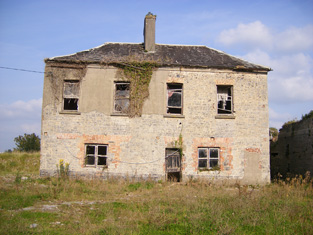
|
| Fahafeelagh | In 1851, Nicholas Power was leasing this property from the Barron estate when it was valued at £13. Recorded as the address of Catherine Barron in the 1870s. Wilson, writing in 1786, refers to Faghs as the seat of Mr. Barron. Buildings are still extant at this site. | |
| Fahagh Court | In 1786 Wilson mentions Fagha as the seat of Mr. Falvey. At the time of Griffith's Valuation, Daniel Buckley was leasing this property from John Morrogh Bernard, when it was valued at £3 10s. In 1906 Bertram Morrogh Bernard owned this property, then valued at £25. A house built n the later nineteenth century, it is labelled Fahagh Court on the 25-inch Ordnance Survey map of the 1890s. In 1943 the Irish Tourist Association survey noted that it had been extensively reconstructed and modernised and "bears little resemblance to the historic residence of the Morrogh-Bernards and before them the O'Flavey clan". It was then occupied by the Reynolds family. Bary states that the property became a hotel in the twentieth century before being damaged by fire. The extensive yard complex has now become the Killarney Country Club and holiday accommodation. |

|
| Fahalea | Thomas Daunt held this property in fee at the time of Griffith's Valuation, when it was valued at £10. Extensive farm buildings exist at the site now. | |
| Fahan House | Elizabeth Jones was leasing this property from the Norman estate at the time of Griffiths Valuation in the 1850s, when it was valued at over £28. In 1837 Lewis referred to it as the seat of T. Kough. The National Inventory of Architectural Heritage suggests this house was built in the 18th century and extended in the 19th. It appears to be associated with a number of different families. |

|
| Fahan Rectory | William Alexander held this property in fee at the time of Griffiths Valuation in the 1850s, when it was valued at £26. In 1837 Lewis referred to the Glebe House as the residence of Reverend W. Hawkshaw. A house is still extant at the site. |
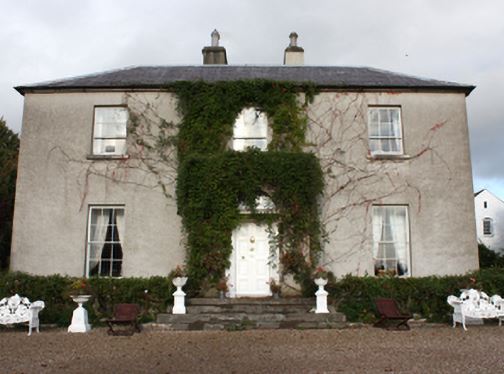
|
| Faheens | An O'Donnell residence in the 1830s. No house with a substantial valuation exists in the townland by the time of Griffith's Valuation. | |
| Fahy | Built 1796, a former Paget home occupied by Ernest Knox of the Castlereagh family in the late 1830s. Lackland Chisholm was the tenant at Fahy in 1853. The original house is no longer extant. | |
| Fair View (Dane Ville) | The property at this site is labelled as Fair View on the 1st edition Ordnance Survey map of the late 1830s. On the 25-inch edition of the early 20th century it is labelled Dane Ville Lodge. At the time of Griffith’s Valuation, it was being leased by Mrs. Deane from the representatives of Colonel Dickson and Thomas Conolly’s estate when it was valued at £18. The site is now occupied by a modern house. | |
| Fair View, later Dane Ville | The property at this site is labelled as Fair View on the 1st edition Ordnance Survey map of the late 1830s. On the 25-inch edition of the early 20th century it is labelled Dane Ville Lodge. At the time of Griffith’s Valuation, it was being leased by Mrs. Deane from the representatives of Colonel Dickson and Thomas Conolly’s estate when it was valued at £18. The site is now occupied by a modern house. | |
| Fairbrook House | At the time of Griffith's Valuation, Patrick Stephenson was leasing an extensive mill complex from Thomas Gamble at this location. It is described as Fairvew Paper Mill on the 1st edition Ordnance Survey Map and as Fairbrook Factory on the later 25-inch edition. The house and mill had a combined value of £95. The buildings are still extant. |
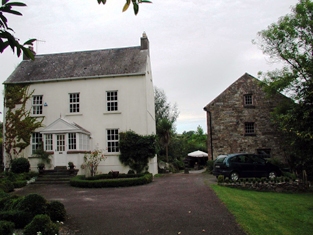
|
| Fairfield | Fairfield was the birthplace of the Reverend John Richard Darley in 1799 who became Bishop of Kilmore in 1874. Facing the shore of Inner Lough it is named on the 1st edition 6 inch Ordnance Survey Map (1836). The Field Name Book states that it was the property of Lord Cremorne let to the former proprietor Mr Corry. Griffith’s Valuation records Lord Cremorne as the occupier holding it in fee. The buildings were valued at £23. By the early 20th century this house was no longer in use. The site is now surrounded by a forest. | |
| Fairfield | Valued at £18 and held in fee by Pollok at the time of Griffith's Valuation. It is no longer extant. | |
| Fairfield (Kilgerrill) | Wilson, writing in 1786, notes Fairfield as the seat of Mr. O'Brien. In 1837, Lewis records Fairfield as the seat of John O'Brien. At the time of Griffith's Valuation Fairfield was leased by James Thorngate to Daniel Cruise. Taylor and Skinner record Fairfield as a seat of the O'Brien family in 1783. The original house is not extant. |
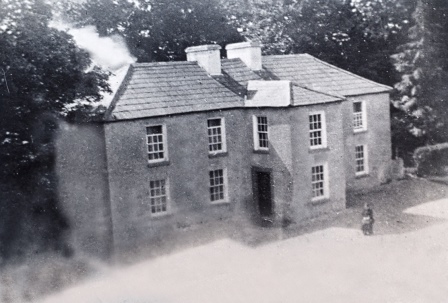
|
| Fairfield House | Lewis records Fairfield as the residence of T. Wade in 1837. It is described in the Ordnance Survey Name books as "built on rising ground from which there is a good prospect". At the time of Griffith's Valuation the house was being leased by Thomas Wade from the Handy estate. In 1906 it was in the possession of Rochford Wade when it was valued at £23. Fairfield House is no longer extant and the demesne is the focus for a major sawmilling operation. |
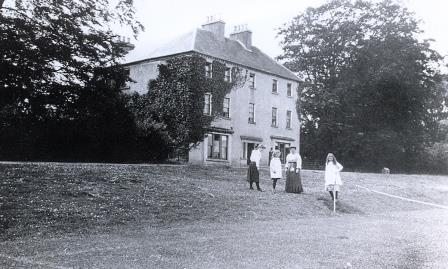
|
| Fairhill | Built in the late 18th or early 19th century, Fairhill was the home of the Fair family. It became established as a well known guest house for fishermen in the 20th century and is now a modern hotel run by descendants of the Fairs. |

|
| Fairview | Part of this house, situated on the Verner estate, dates from the late 18th century. Fairview is named on the first edition 6 inch Ordnance Survey map. The building was only valued at £4 in Griffith’s Valuation, when it was occupied by William Lockart. It was considerably added to sometime in the mid-19th century. James Lockart occupied the house in 1910 (Ulster Towns Directory 1910). |
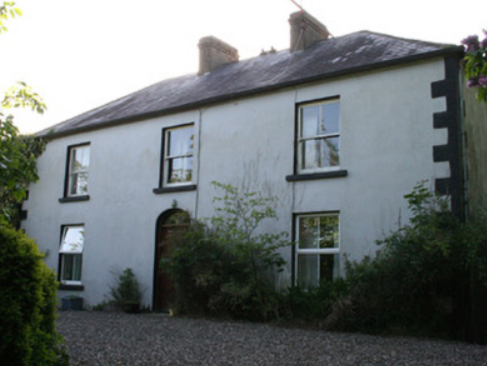
|
| Fairview (Inishowen) | John Harvey held this property in fee at the time of Griffith’s Valuation, when it was valued at £10. This property is marked as Fairview Demesne on the 1st edition Ordnance Survey map but the house is not named. Neither house nor demesne are named on the early 25-inch edition. It is no longer extant. | |
| Fairy Hill | James O'Brien was living in this house in 1814 and it remained in the possession of O'Briens until the 1860s. Valued at £5 at the time of Griffith's Valuation when the Reverend Daniel Lynch was in residence. Occupied by the Lynch family in the 20th century. | |
| Fairy Hill | This house was situated on the Gore estate and was the residence of John McDonnell in the mid 19th century who held the property from Charles William Gore. It was valued at £14. In 1837 it was inhabited by E. Burnard. Although the house became derelict in the early 20th century it was later reconstructed and is still a residence. | |
| Fairy Hill | At the time of Griffith's Valuation Robert De La Cour was resident at Fairy Hill, which he held from the Earl of Limerick. The buildings were valued at £36. Hajba writes that Robert lived in this house from circa 1817 to 1878. The property then passed to his niece, Miss Herrick of Shippool, who married William Nicholas Wrixon Becher in 1888 and this couple lived at Fairy Hill. Fairy Hill was in use as a nursing home at the beginning of the 21st century. | |
| Fairy Hill | Thomas Doolan was leasing a property at Fairy Hill, valued at £20, to Charles Cooper at the time of Griffith's Valuation. Slater had noted it as the residence of Thomas Doolan in 1846. In 1894 Slater records Fairy Hill as the seat of Colonel Cheevers. This house is still extant. |
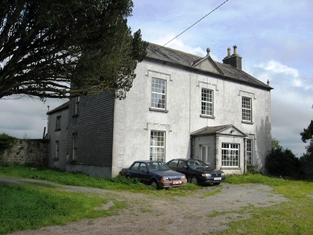
|
| Fairyhill | Fairyhill was the home of William Henry Cox in 1837. The Ordnance Survey Name Books describe it as "a large mansion house, the residence of Mr. Cocks [sic]" in 1841. It was occupied by Ellen Robinson in the early 1850s, when the house was valued at £19 and held from Lord Ashtown. Valued at £16 in 1906 and held by George W. Robinson. This house is still in use as a residence. |

|
| Fairyhill House (Clonmel) | Leased by Thomas Hughes to David Franks at the time of Griffith's Valuation in 1850 when it was valued at almost £27. Fairy Hill is still extand and occupied. |

|
| Fairymount | In 1786 Wilson writes that Fairy-Hall was the seat of Hon. Rev. Mr. Murray. It was the residence of Robert Going in 1814 and of Henry O. Bridgeman in 1837 and at the time of Griffith's Valuation. The house was located in the townland of Montpelier on the De Burgho estate and was valued at £16. It was surrounded by a 35 acre demesne. This house is called Fairymount on the first Ordnance Survey map and in Griffith's Valuation. Fairyhall was the name of the townland just to the north of Montpelier. Farm buildings are still extant at the site. | |
| Fairymount | The home of Edward Mills in 1814. In 1828 Edward Mills of Fairymount was a member of the Grand Panel of county Roscommon. Residence of Mr Lyster at the time of the first Ordnance Survey. By the time of Griffith's Valuation the largest house in the townland of Fairymount was valued at £1.15s, leased by Anne Lyster to Michael Connolly. | |
| Faithlegg House | At the time of Griffith's Valuation, Faithlegg House was owned by Nicholas O'Neill Power and valued at £100. The lands in this area were originally held by the Aylward family after the Norman Conquest but they were dispossessed by Cromwellian forces in the 1650s. Faithlegg was then acquired by the Bolton family who eventually built the house in the eighteenth century. It was sold by them to the Power family in 1819. It was enlarged and extended under Power ownership and in 1906 was valued at £110. Faithlegg remained in the Power family until 1935 when it was sold to the De La Salle order who used it as a novitiate until the 1980s. It is now Faithlegg House Hotel. See www.faithlegg.com. |
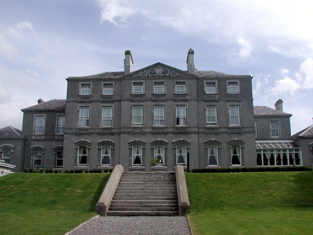
|
| Falleen | The home of the Hawkeshaw family in the 19th century, held from the Bowens of Bowens Court. Benjamin Hawkeshaw is recorded as the occupant in 1814 and in the early 1850s when the house was valued at £13.14 shillings. G. Riall was resident in 1837. The Ordnance Survey Name Books refer to Falleen as the seat of James Bennett in 1839. A house is still extant at the site. | |
| Falmore House (Inishowen) | James Nicholson held this property in fee at the time of Griffith’s Valuation, when it was valued at £16. This house was built after the publication of the first OS Map. It is labelled as Falmore House on the 25-inch map of the early 20th century. The National Inventory of Architectural Heritage notes that a plaque on the house records its building by J. Steele Nicholson in 1850. It is now derelict. |
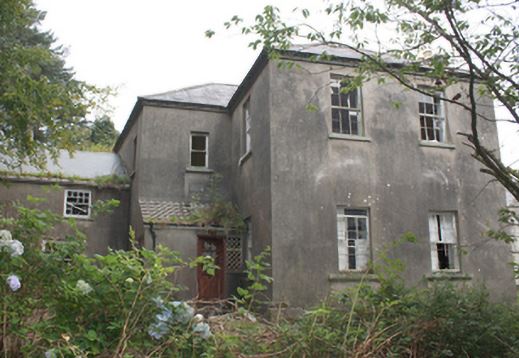
|
| Faltia House | Daniel Mathers occupied Faltia House, barony of Moycarn, at the time of Griffith's Valuation, when it was valued at £9. It was part of a demesne of over 400 acres. The Ordnance Survey Field Name books of 1837 describe it as "a gentleman's place in good repair". | |
| Fanningstown Castle | An 18th century house which was the home of the Jackson family. Henry Lee is recorded as resident at Fannings-town in 1814. This house was demolished and a battlemented building was erected in the bawn of the old medieval castle by Hamilton L. Jackson in the 1850s and offered for sale in 1860. Bought by David Vandeleur Roche of nearby Carass in the 1860s. Occupied by James Fitzgerald Bannatyne in 1906 who held the mansion house valued at £31+ and 359 acres of untenated land. The castle now provides self catering accommodation and can be hired as a venue for functions such as weddings. http://www.fanningstowncastle.com/index.htm |

|
| Fanore Lodge | This house was located on the O'Brien estate. Occupied by Richard Blood in 1814 and by Robert Johnston at the time of Griffith's Valuation, when it was valued at £5.10 shillings. Robert Johnston held the house and 950 acres from Jemima O'Brien. Weir writes that the house later became a police barracks. Buildings are still extant at the site. | |
| Faragher Lodge | Lodge was the residence of Thomas Hawkes in 1814 and Faragher Lodge of the Reverend Lewis Hawkes in 1837. | |
| Farm Hill | A house marked on the 1st edition Ordnance Survey map with a corn mill nearby. This house looks reduced in size on later maps. In the mid-19th century occupied by Hugh Swanzy and held from Thomas Rothwell. The house was valued at £15 with corn and flax mills and miller's house valued at £35. Part of the existing farmyard may date back to circa 1800. |
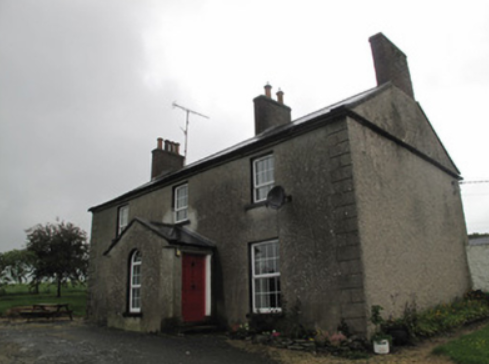
|
| Farm Hill | In the mid 19th century occupied by Mrs Hannah Goold, valued at £13 and held from Richard and Jonas Morris. This house is marked on the first Ordnance Survey map and a building is still located at the site. | |
| Farm Hill (Reduff) | A house marked on the 1st edition Ordnance Survey map with a corn mill nearby. This house looks reduced in size on later maps. Described in the Ordnance Survey Field Name Book as a ‘small 2 storied house with some scattered portions of plantation around it and extensive corn mill nearby’, occupied by ‘Mr Robinson’. In the mid-19th century occupied by Hugh Swanzy and held from Thomas Rothwell. The house was valued at £15 with corn and flax mills and miller's house valued at £35. Part of the existing farmyard may date back to circa 1800. This house and its yard buildings are now part of a working farm. |
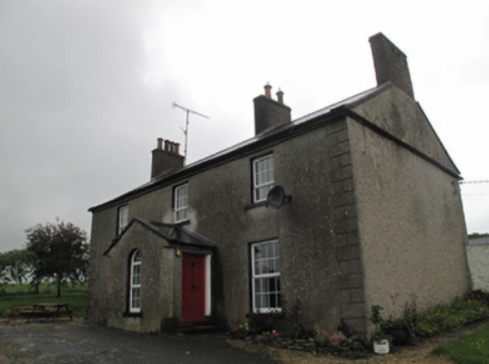
|
| Farm Lodge | Marked as Farm Lodge on the first Ordnance Survey map this house on the De Vere estate was occupied by James Potter in the early 1850s when it was valued at £16. An extensive farm still exists at the site. | |
| Farmhill | Joseph Kelly was leasing a property valued at almost £10 from Charles Kelly at Farmhill, barony of Tiaquin, at the time of Griffith's Valuation. A house still exists at this site. | |
| Farmhill | Built in 1780 this house became the principal seat of the Gardiner family. It was left by Harriet Gardiner to Susan Pringle who died in 1910. Farmhill then became the parochial house until the 1950s when it was demolished. Only the large walled garden now remains. | |
| Farmhill (Donegal) | Jacob Spence was leasing this property from the Arran estate at the time of Griffith’s Valuation in the 1850s, when the complex was valued at £23, including a flax mill and a corn mill. | |
| Farmhill/Carradoyne | In 1786, Wilson refers to Farmhill as the seat of Mr. Vesey. Dean Arbuthnot, who lived in the house in 1814, was rector of the parishes of Crossboyne and Kilcolman and a brother of Sir Robert Arbuthnot. The Gonne Bells were recorded as resident in Lewis and the Ordnance Survey Name Books. The house appears to have been known as Farmhill during the Vesey/Arbuthnot/Gonne Bell ownership and thereafter as Carradoyne House. It was occupied by Thomas Elwood in 1845 and by Lady Lynch Blosse at the time of Griffith’s Valuation. By the 1860s it was the home of the Sheffields. It was occupied by Katherine Tynan and her husband, Henry Albert Hinckson, during World War I. Carradoyne House is still extant and occupied. |

|
| Farnane House | Located on the Cloncurry estate Farnane was the home of the Costelloe family from at least 1837. Occupied by Thomas Costelloe in the early 1850s and valued at £12+. It is labelled Farnane House on the 1st edition Ordnance Survey map but is not labelled on the later 25-inch edition of the 1890s. It is no longer extant. | |
| Farney Castle | A seat of a branch of the Armstrong family. Wilson refers to this property as Farney Bridge in 1786, a seat of Mr. Armstrong. It was occupied by Captain Armstrong in 1814 and 1840, when the Ordnance Survey Name Books describe it as "a circular old castle to which a gentleman's residence has been attached". Major William Armstrong was the occupier in the early 1850s. The buildings were then valued at £42.10 shillings and held from the Reverend Garrett Wall. It was still in Armstrong possession in the 1870s. Farney Castle is still extant and occupied. |

|
| Farnham Castle | The seat of the Maxwell family, Earls of Farnham, built about the turn of the 18th century for John Maxwell, son of the Bishop of Kilmore, who had purchased the estate from the Waldrons. A library and other alterations designed by James Wyatt were added in the 1780s. In the early 19th century Francis Johnston was employed by the 2nd Earl to rebuild the house. The buildings were valued at £120 in the mid-19th century. The house was remodelled again in the 1960s when dry rot was found to be prevalent and much of the 18th building was demolished. The house remained in the possession of the Maxwell family until the early 21st century. It is now a country house hotel. https://www.farnhamestate.ie/ | |
| Farragh | An 18th century house on the Palmer estate. Wilson refers to it as a residence of Mr. Palmer in 1786. Leased to the Waldrons in the early 19th century and occupied by Hector Sutherland at the time of Griffith's Valuation when the house was valued at almost £8. The original building is no longer extant. | |
| Farran | At the time of Griffith's Valuation, William Kearns was leasing this property from the Crosbie estate when it was valued at £18 5s. Some farm buildings are still extant at the site. | |
| Farran | This house was owned by Samuel Penrose at the time of Griffith's Valuation when it was valued at £24. It was also occupied by him in 1837. In 1868 Farran was bought by William Clarke and three generations of the Clarke family lived at Farran until 1970. In 1906 the buildings were valued at £226 and Thomas Clarke was the occupier. The Irish Tourist Association Survey in the 1940s describes it as "the splendid residence of Captain Clarke, living in the Channel Islands but occupied by his relatives". The present owners offer self catering accommodation for groups. see http://www.farranhouse.com/history.htm |

|
| Farranakilla | At the time of Griffith’s Valuation, James Hussey was leasing a property valued at £26 to Edward Day Stokes. In 1837 Lewis records it as the seat of P.B. Hussey. Bary states that Farrankilla House was built c.1800 by the Hussey family. Edward Day Stokes, to whom it was leased at the time of Griffith’s Valuation, was an agent for both Lord Ventry and the Townsend estate. The house was sold several times in the 20th century. It is still extant. | |
| Farranawana House | At the time of Griffith's Valuation, this property was being leased by St. John Blacker to the trustees of Glin Poor Law Union, as an auxilliary workhouse. By 1895 it is labelled on the Ordnance Survey map as Farrawanna House. A house and farm buildings are still extant at the site. | |
| Farranhavane House | Leased by John Smith Wood from the representatives of Maskelyne Alcock in 1851 when it had a valuation of £10. It is still extant and part of a large farming enterprise. | |
| Farranredmond | At the time of Griffith’s Valuation, Robert C. Hickson was leasing this house, valued at almost £6, from Patrick Stack. The latter held other property in the same townland from Lord Ventry’s estate. Buildings are still extant at the site. | |
| Farrenmacfarrell | James Ormsby was occupying this property at the time of Griffith's Valuation, when it was valued at £6. McTernan states that the house was built by Thomas Ormsby at the end of the eighteenth century. In 1906, the house at Farranmacfarrell was owned by Alexander Cuffe and was valued at £7. The house is still extant but appears to be unoccupied. | |
| Faughts Cottage | At the time of Griffith's Valuation, Phillip Parke was leasing a property at Faughts, barony of Carbury, valued at £7, from John Wynne. This appears to be the house described on both the First and 25-inch edition Ordnance Survey maps as "Faughts Cottage". A house is still extant at the site. | |
| Faulkland Castle | Shirley refers to the confinement of John Leslie, Dean of Dromore, by Robert Maxwell, Sheriff of Monaghan, in his house at Falkland/Faulkland in 1707. The Maxwells occupied Faulkland Castle until 1780. By the time of Griffith’s Valuation it was valued at £1.6 shillings and was held by James Jackson Senior from the trustees of John Maxwell. The 25 inch map (surveyed 1908) shows the castle ‘in ruins’. | |
| Faulties | At the time of Griffith's Valuation Francis Nesbitt was leasing a property valued at £11 from Catherine Warren at Faulties, barony of Mohill. Buildings still exist at the site. | |
| Feacle/Fighill | The residence of Dennis Keogh in 1814, occupied by R. Keogh in 1837 and by Richard Keogh in the 1850s when the house was valued at £2. The house has been known as Fighill since at least 1837. The old house is no longer lived in. |

|
| Fear More | Occupied by William Roper junior at the time of Griffith's Valuation and by John J. Daly in 1906. | |
| Fearmore House | In 1856 Edward Horsman was leasing a house in the townland of Fearmore from the Clanricarde estate. It was valued at almost £9 at the time. It is still extant and occupied. |
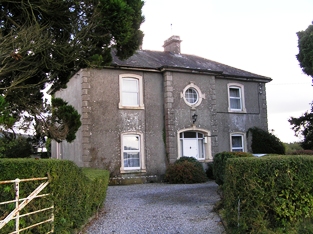
|
| Featherstone Lodge | Reverend John Fetherstonhaugh was leasing a house valued at £6 and over 1700 acres at Toorleitra from the Burke of Marble Hill estate at the time of Griffith's Valuation. Very little remains of the house and the area has been extensively planted with forestry. | |
| Fedamore | A house known as Fedamore Cottage is marked on the first Ordnance Survey map. By the early 1850s John and Edward Synan were the occupiers of a house valued at £27 in Fedamore townland, which they held from Colonel Wyndham. The property is shown as Fedamore House on the 25-inch map of the 1890s, by which time it was the residence of J.G. Kelly. It is still extant and occupied. | |
| Feddans | Reverend John Condon, PP, was leasing this property from the Power estate in 1850 when it was valued at £11. The parochial house is labelled on the 25-inch Ordnance Survey map of the 1890s. A house is still extant at the site. | |
| Feenagh House | Feenagh House is described as "in ruins" on the 1st edition Ordnance Survey map and has almost disappeared by the publication of the 25-inch edition in the 1890s. In 1786 Wilson refers to "Fenagh House" as the seat of Mr. Wilson. By the time of Griffith's Valuation, the townland in which it was situated was the subject of Court of Chancery proceedings. Some fragments of the walls are still visible. | |
| Fell Fort | Slater noted Fellport [Fellfort] is noted as the residence of R.L. Fell in the 1890s | |
| Fenagh Glebe | Rev. George Beresford held the Glebe at Fenagh, from the Ecclesiastical Commissioners at the time of Griffith's Valuation when it was valued at £16. The Buildings of Ireland survey states that the house was built c. 1829. It also records that the nearby church, built c.1790, was extended in the 1850s by the Pack Beresford family. Both buildings are still extant and in use. |

|
| Fenit House or Fenit Lodge | Though this house was mostly associated with the Hurley family, at the time of Griffith's Valuation, it was in the possession of a Miss Locke, when it was valued at £20. It was being leased by John Murray. In 1906 it was owned by John C. Hurley and valued at £33. Bary notes that it later came into the Fuller family through marriage. It was sold in the 1970s but is still extant and occupied. |
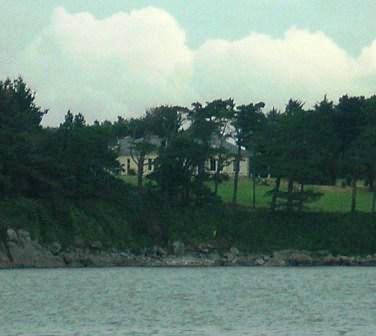
|
| Fenloe House | A red brick two storey 18th century house, home of the Hickman family for the 18th and 19th centuries. Hugh Poole Hickman was the occupier in 1837 and at the time of Griffith's Valuation, when the house was valued at £28. He held the property from William Westby. |
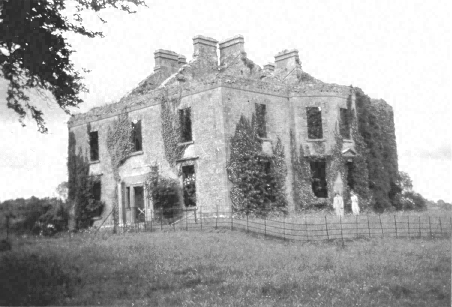
|
| Feohanagh | There is no large house marked on the first Ordnance Survey map for this townland, however by the time of Griffith's Valuation in the early 1850s a house valued at £10+ was recorded in Feohanagh. It was occupied by James Wigmore and held from Viscount Lismore. [Grid reference is approximate] | |
| Fermoy House | Lewis refers to Fermoy House in 1837 as the residence of the late J. Anderson “to whom not only the town owes its prosperity but the entire country…”. It was then occupied by Mrs Hennis. The Reverend Maurice Collis was in residence by the time of Griffith's Valuation. He held the property from Sir Robert Abercrombie and the buildings were valued at over £50. In 1786 Wilson writes of a house at Fermoy, the seat of Mr. Bryan. The Irish Tourist Association Survey of 1942 states that Fermoy House was then the property of Maurice Cooke Collis and was divided into five flats. The house was demolished in the 1960s. | |
| Fermoyle Castle (Iveragh) | Charles Sugrue was in possession of this property at the time of Griffith's Valuation, when it was valued at £15. In 1906 it was owned by the representatives of Edward Sugrue. Bary states that there was originally an O'Sullivan castle at this site, on to which a house was built by John Sugrue in the 1820s. The Sugrue family later moved to Cork and the house was used for some years as the local Catholic presbytery. It is now a ruin. | |
| Fermoyle House | At the time of Griffith’s Valuation, Robert C. Hickson was leasing this house, valued at £28, from the Earl of Cork’s estate. Lewis notes Fermoyle House as the seat of J. Hillyard in 1837. In 1906 it was the property of George A. Hickson and valued at £25. Bary states that the house was, for a long period, associated with the Conway Hickson family. It is still standing and inhabited. |

|
| Fermoyle Lodge | Built in 1875 by the Berridge family as a shooting lodge. It has since served as a guest accommodation and an art gallery and has been offered for sale on a number of occasions. |

|
| Fern Hall | At the time of the first Ordnance Survey the Trant family were recorded as the proprietors of the townland of Polranny, barony of Castlereagh, including Fern Hall House. Henry Dillon Trant was leasing it to John Irwin at the time of Griffith's Valuation when it was valued at almost £5. Gormley states that this branch of the Irwins was the oldest in the area, having been recorded there in the sixteenth century. The house was not in good repair by the end of the nineteenth century and no trace remains now. | |
| Fern Hill | AT the time of Griffith's Valuation, this property was being leased from the Earl of Shannon's estate by Anna Atkins. It was then valued at £28. In 1837, Lewis refers to it as the seat of W.F. Atlkin. Now part of the Fernhill House hotel complex. |

|
| Fern Hill | Smith records Cornelius Townshend as resident at Betsborough circa 1750. Hajba writes that it was a Townsend property from the early 18th century and birthplace of the United Irishman, Thomas Russell, executed in 1803. The house, on the outskirts of the village of Drommahane, was originally known as Bettesborough (or Besborough) and a Magner occupied a house of this name in 1837. The Reverend Philip Townsend held the house valued at £21+ from William Magner in the early 1850s. In June 1881 the house and demesne of Fernhill were advertised for sale. Barclay Corrie was the owner, holding on a lease dated 1863 from Richard John Perry to Michael Joseph Magnier. The house was demolished in the early 20th century and a new house built on the site. |
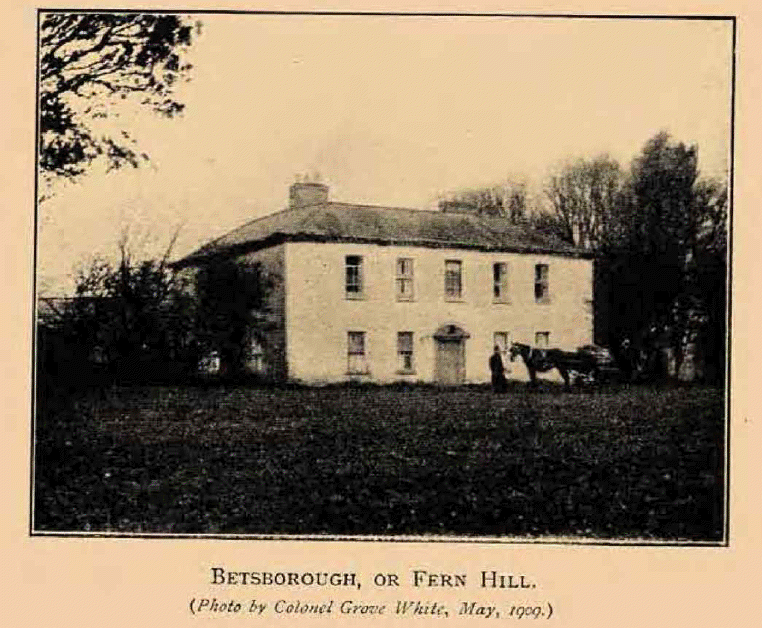
|
| Ferney | Ferney was the residence of Mrs Coote in 1814 and of J.H. Manley in 1837. Joseph Manly occupied the house valued at £68 at the time of Griffith's Valuation. He held it from Sir William Chatterton. This house is still extant. | |
| Ferney Hill | A house at this site was valued at £10, located on the Barrett-Lennard estate and held by Mary Jameson at the time of Griffith’s Valuation. The National Inventory of Architectural Heritage dates the present house circa 1890. Mulligan writes that it was built for a town merchant Mr M. Maguire. |
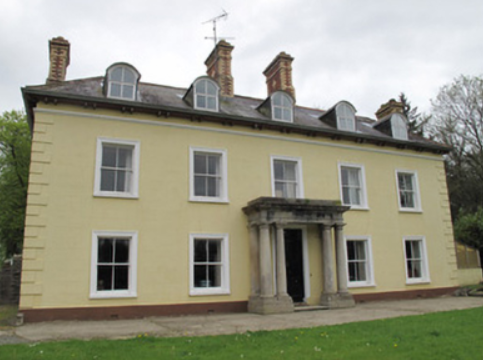
|
| Ferns Hill Glebe House | This property was held in fee by Reverend G. Tredennick at the time of Griffith’s Valuation, when it was valued at £24. It is labelled as both Glebe and Ferns Hill on all editions of the Ordnance Survey maps up to the 1940s. It is no longer extant. | |
| Fiddaun Lodge | In 1786 Wilson refers to Fidane as the seat of Mr. Kelly. Melvin writes that John Dennis, the famous huntsman, was born at Fiddaun in 1800. Charles O'Rorke was leasing it from the Redington estate in the mid 1850s when the house was valued at almost £5. A house still exists at the site. |
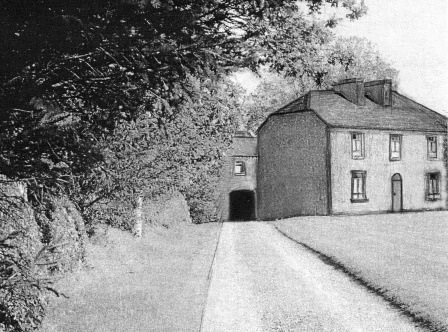
|

